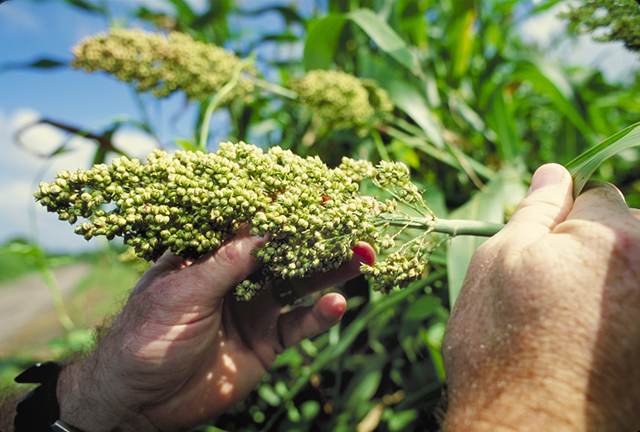Calorie Dense Staple Crops
We cannot thrive on leaves alone. Many of the foods we can harvest from a garden provide excellent nutrition but don’t really contain all that many calories. Plants with this attribute are staple crops high in fats, proteins, and carbohydrates. Calorie crops can become a significant part of the home-grown diet and take you further down the path to self-sufficiency.
Every culture has staple crops that provide the calories needed to fuel their society. Sometimes these crops are consumed in their simplest form, other times reimagined by drying, pounding, milling, fermenting and other transformational processes. In many cultures, a large majority of the daily caloric intake is derived from a single staple crop. These crops not only form a strong part of a cultural identity, but traditionally they transformed local landscapes with their cultivation.
Considering how diverse human societies are, it may be surprising to learn that very few crops actually feed a vast majority of the world. Of the more than 50,000 known edible plant species on the planet, only 15 plants provide a whopping 90% of the world's food-energy. Three of these alone are responsible for 60% of this! These relatively few plants are the staples that form the dietary bedrock of our civilization. Unfortunately, many of these today are produced via an unsustainable and ever growing insecure industrialized supply-chain.
That is why for those seeking self-sufficiency, food security, and to live by the guidelines of permaculture, it is important to consider growing a few high-yielding staple crops. These highly productive crops can free us from the unsustainable food system, or at the very least lower our dependence on it. For those worried about insecurity in the supply-chain, these crops also provide an emergency safety-net of resilience.
Beyond Grains With Permaculture
Today, the most important staple foods on the planet are grains. Particularly, cereal grains like wheat, rice, and corn, which provide more than 60% of our world's food energy! While it's hard to deny their importance, these are by no means the only or most superior staple crops. In the context of permaculture and sustainability, they actually have major downsides compared to other potential staples. Why?
- Cereal grains are labor intensive. Not just for their cultivation but also in harvesting and processing.
- They require more land compared to other types of crops. They are also relatively taxing on the soil and overtime require inputs and crop-rotations.
- Grains are more sensitive to annual fluctuations on climate and require dry conditions for harvest and storage.
While I don't suggest anyone needs to completely eliminate cereal grains from their diet, there are better alternatives for small-scale producers and permaculture practitioners. Perennial crops for example provide the least labor and resource intensive source of calories. There are also a handful of other annual crops that are better suited for permaculture designs.
Regardless of these factors, if you’d like to give growing cereals a shot, by all means give it a try! It is possible to incorporate them into a functional design, not to mention there are unique heirloom cereals of nutritional interest. Afterall, cereals have been traditionally produced on artisanal scales for centuries.
Choosing The Right Staple Crop
When considering what staple crops to include in your design there are 3 main things you will want to consider.
-
- Growth Requirements: Knowing what crops are suited for your climate and soils is crucial. In many cases, the historical and traditional diets of a region can serve as great indicators to what staple crops are best suited.
- Work Intensity: Some crops, such as perennial fruit bearing species, may take a long time to establish but they can be grown with little effort. These are relatively passive crops to cultivate. Annual species are often more labor intensive and require active management.
- Culinary Value: Every crop is different from a nutritional and gastronomic perspective. If you don’t enjoy eating a certain crop it may not be worth having it in your design. On the other hand, less cherished species that grow passively can serve as a supplemental or emergency food source.
While relatively few crops dominate the modern human diet, there are many more that can be utilized as staples. These are diverse, ranging in size, biology, climate preferences, labor-requirements, and nutritional value. While these tend to provide starchy carbohydrate rich foods, their culinary uses and flavors are each unique.
Starchy Root Crops
These are perennial plants that make starchy underground roots. The classic examples are the potatoes, but others are taro, cassava, sweet potatoes, and yams. While these are perennial in nature, many are cultivated as annuals. The greatest diversity of starchy root crops occur in the tropics, but many of these are hardy and can be grown in temperate climates if properly planned.
When it comes to staple crops, these tend to give you the "biggest bang for your buck". They require very little maintenance, are easy to propagate, quick to establish, and offer ample flexibility to the growers. Root crops generally give the highest caloric yield per unit area planted. Today, it is estimated only about 5% of global food energy comes from root crops although this number is likely higher.
Cassava (Manihot esculenta)
Manihot esculenta is an amazing root-crop that originates from South America. It is the third most important source of carbohydrates in the tropics, following rice and corn, and provides an important food-resource for over half a billion people.
[caption id="attachment_4850" align="alignnone" width="2048"]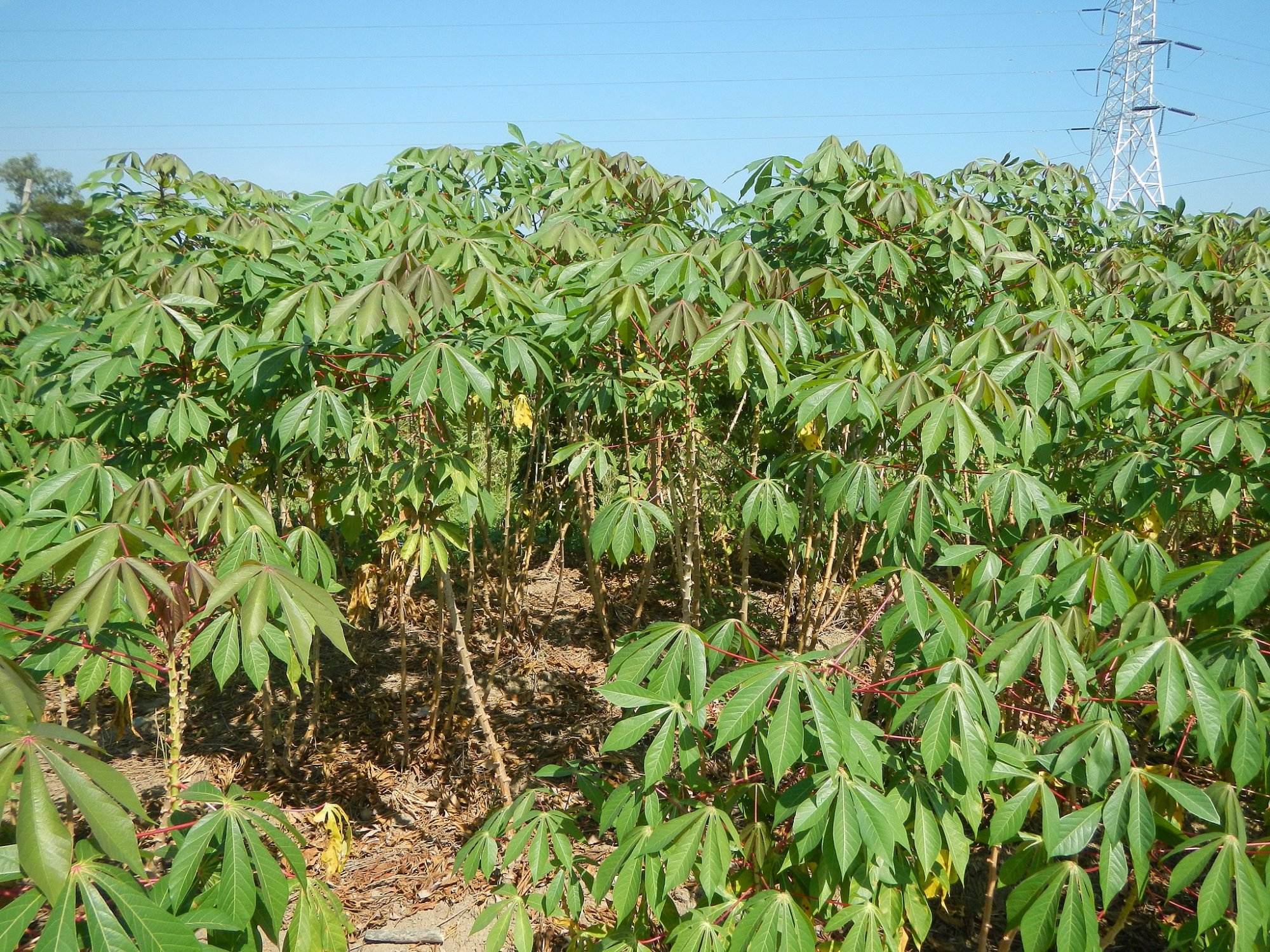
It is believed to have originated from central Brazil and where it was first domesticated about 10,000 years ago. By the time Europeans arrived in the Americas, Cassava had been spread throughout South America, north into Mexico, and into many of the Caribbean islands. While it was only introduced to Africa in the 16th century by the Portuguese, it is now an important food-resource throughout the continent. In Asia, it is most valued for it is most used for making tapioca through starch extraction.
Cassava is easily propagated by cuttings and is notably drought tolerant. It grows into a large woody shrub, with many hard thin stems. Large and delicious roots can be harvested 6-12 months after planting depending on your climate. It is often cultivated as an annual and adequate timing is important in subtropical climates with cool winters. In favorable climates established patches of Cassava can become “weedy” as it is difficult to remove every bit of propagation material after harvest. It is not uncommon to find untended compost piles thriving with Cassava plants and surprise harvests!
[caption id="attachment_4861" align="alignnone" width="990"]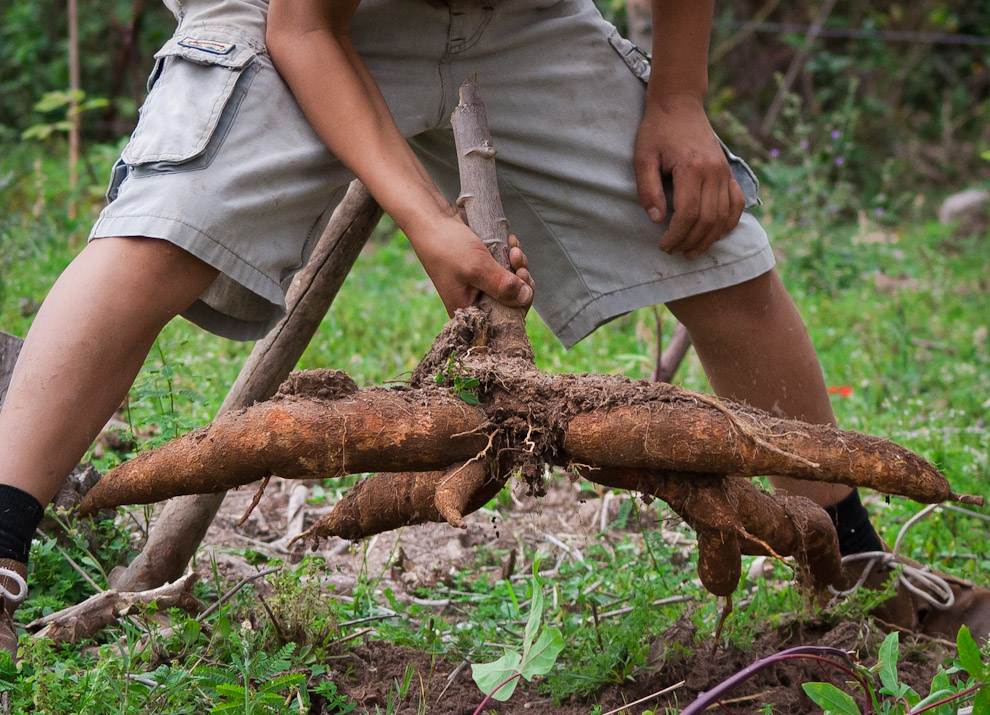
Sweet Potatoes (Ipomoea batata)
Sweet Potatoes are delicious tubers we are all familiar with. They are not technically related to Potatoes at all, and are actually more closely related to ornamental morning glories. Native to the tropical americas, they are now cultivated around the world and in some regions considered staples. They are ranked as the 7th most important staple crop on the planet.
[caption id="attachment_4842" align="alignnone" width="1920"]
Sweet Potatoes are low-growing and bushy vines that love warm weather and thrive in the tropics. This being said, they can easily be grown as annuals during the warmer times of the year in temperate climates. They can be propagated vegetatively via cuttings, often called slips, which can be harvested abundantly from a single plant. Tubers can be induced to sprout for the production of slips.
Sweet Potatoes are great crops not only because they are delicious, but they are also extremely hardy and resistant. In tropical climates, planting sweet potatoes is a no-brainer and the only maintenance is occasionally weeding. They can be left in the ground for months and even forgotten about, where they’ll only get bigger and expand their patch.
Taro (Colocasia esculenta)
Taro is a root crop and staple food consumed in many tropical parts of the world. It was believed to originally be domesticated in Papua New Guinea, and then spread to the polynesian islands and east Asia. Today, it is readily cultivated in almost all parts of the tropical world. One of the notable characteristics of Taro is that it can be cultivated in swampy and waterlogged conditions that very few other crops tolerate.
[caption id="attachment_4418" align="alignnone" width="1600"]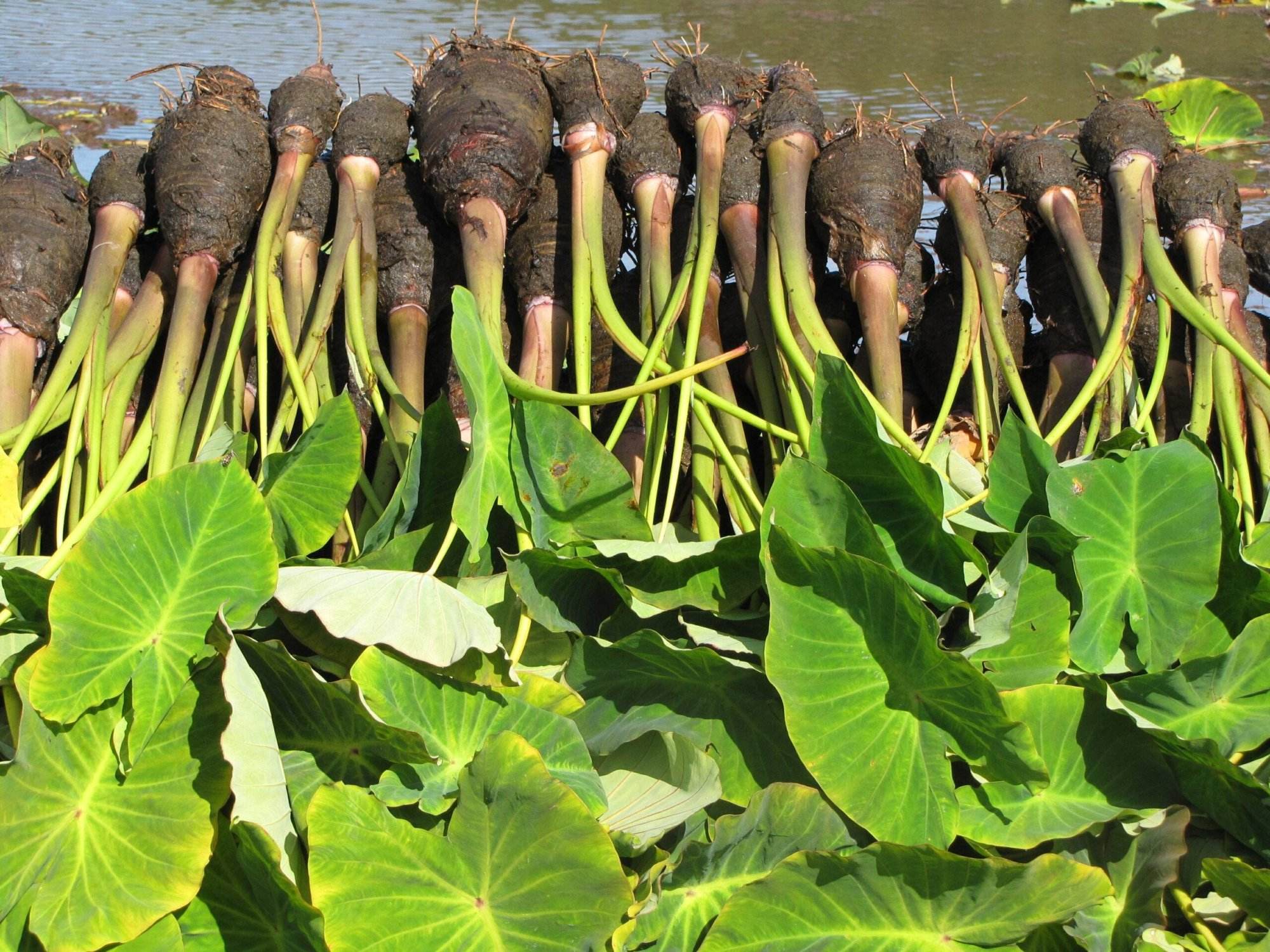
It is very easy to propagate by simply removing small suckers from mature plants. Taro can be harvested just a couple months after planting and quickly give way to dozens of generations of plants. The leaves are edible but it is most valued for its Potato-like starchy corm. Gastronomically, Taro is reminiscent of potato but with a nuttier flavor and a more starchy texture.
Potatoes (Solanum tuberosum)
Potatoes are a classic crop we all know and love. While they are originally from the highlands of the Peruvian Andes, they have now been spread across the globe and rank as the 4th most important staple crop on the planet. Biologically they are considered a perennial plant, but they are most often cultivated as an annual. They are easily the most lucrative and well known starchy root crop for temperate zones.
[caption id="attachment_4860" align="alignnone" width="2048"]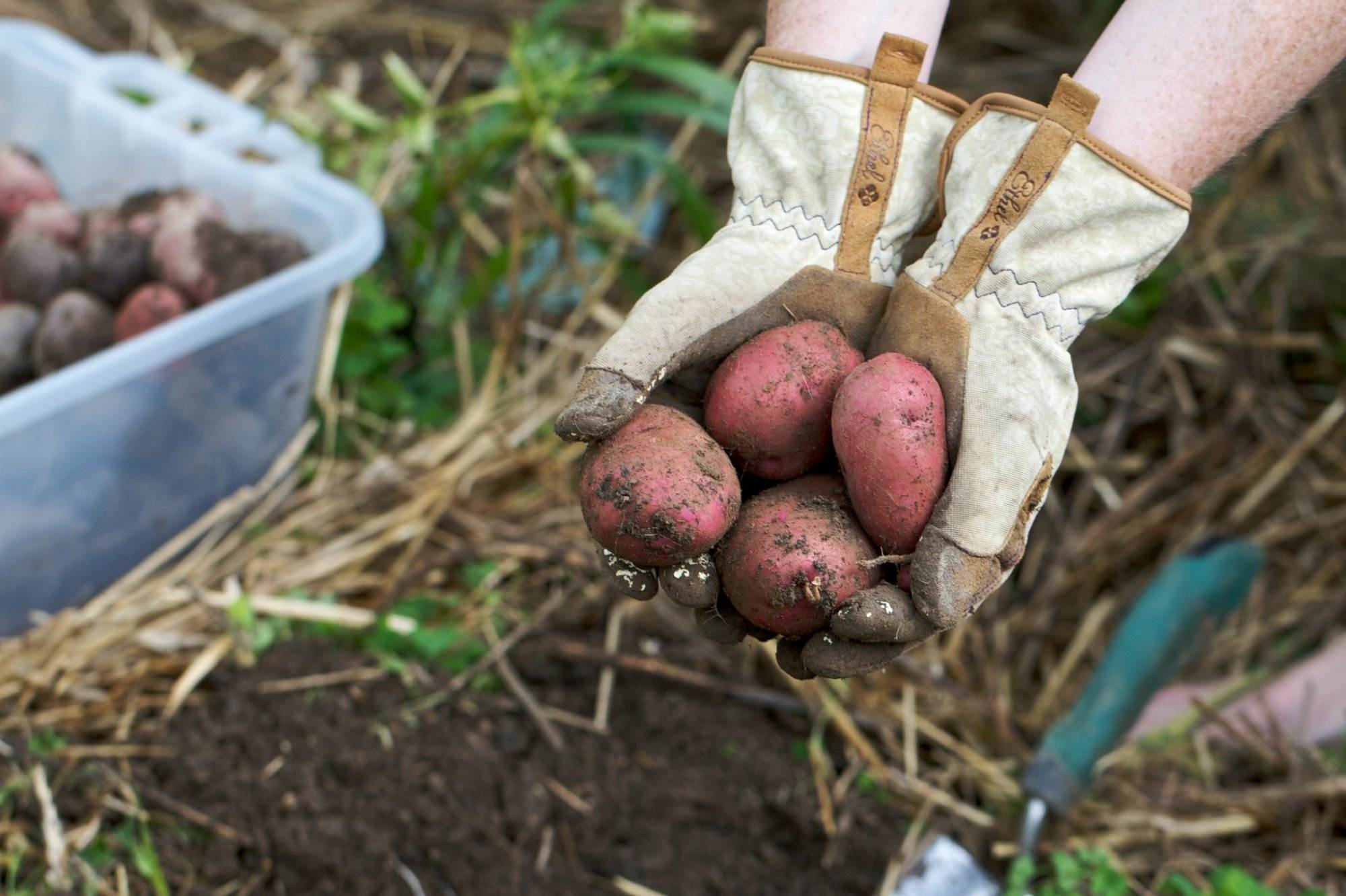
[caption id="attachment_4863" align="alignnone" width="747"]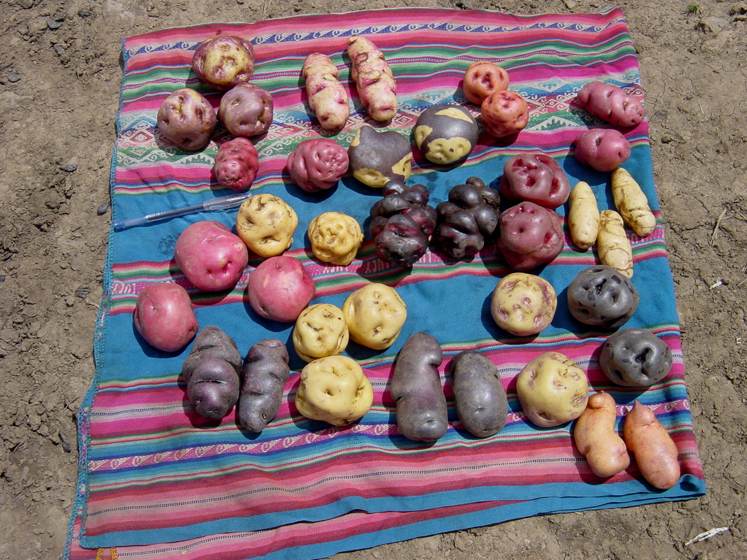
One commonly overlooked thing about Potatoes is the massive diversity of varieties that exist. In the Andes, where they were originally domesticated, there exist hundreds of distinct cultivars of every color and shape imaginable. These vary not only in culinary and nutritional properties but also many have unique growth-requirements.
Yams (Dioscorea sp.)
Yams are high yielding staple crops commonly consumed in tropical regions, particularly parts of Africa and Asia. Contrary to what many people think, Yams are not the same as Sweet Potatoes. While they have somewhat similar foliage and tubers, Yams are actually more related to Lilies and Taro.
[caption id="attachment_4843" align="alignnone" width="2560"]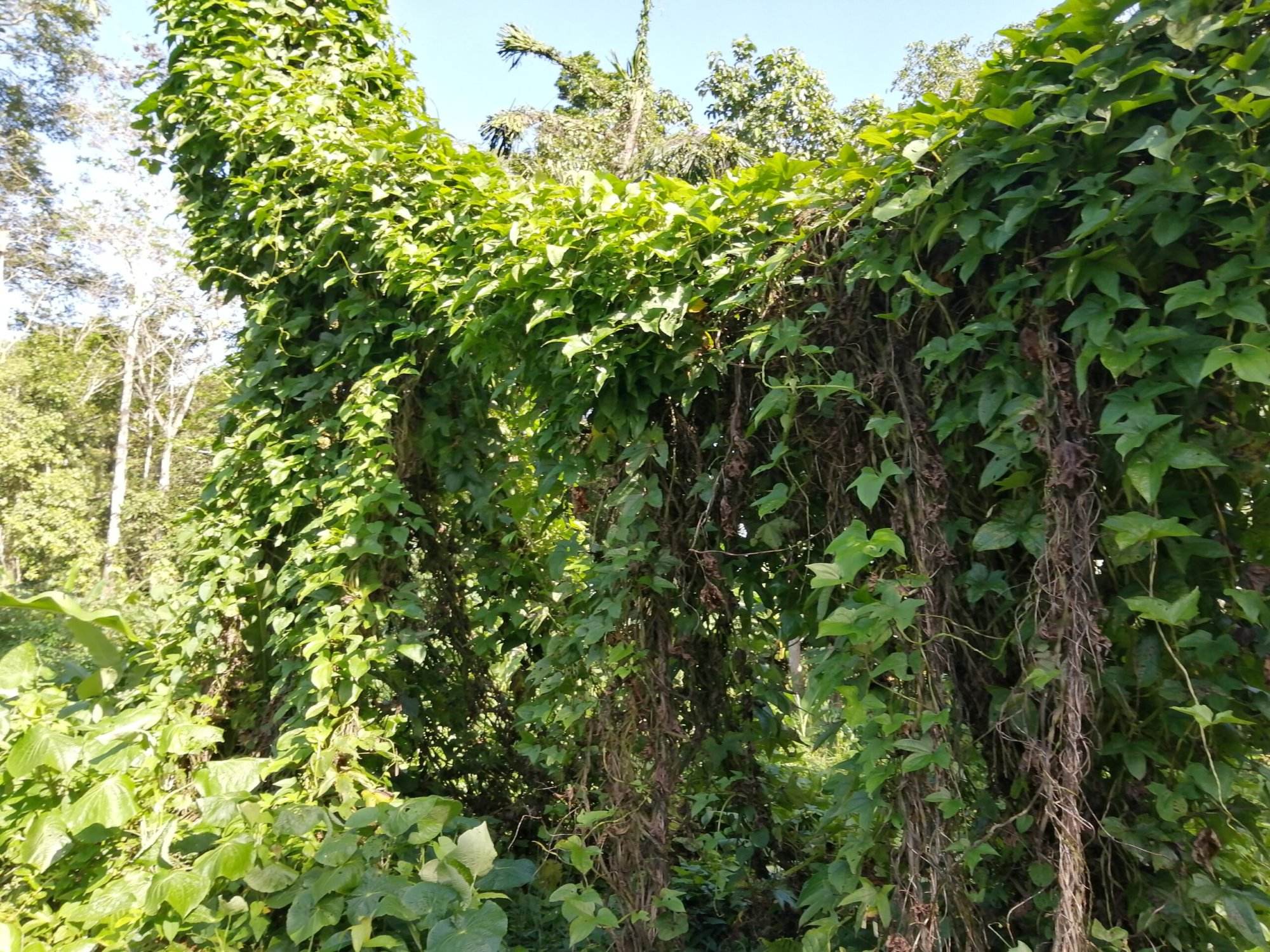
[caption id="attachment_4862" align="alignnone" width="1024"]
There are many different varieties of Yams, many of which are distinct species. The above ground foliage is made of lush sprawling vines which easily climb their way into the canopy. The shapes and colors of the tubers can vary. Some are cylindrical while others are more spherical or irregular. They can be white, orange, purple, and a wide variety of colors. In some cases they can grow to be as large as a man's torso!
The flavor is relatively neutral and reminiscent of a potato. They require a growth structure or other vegetation to climb for proper growth. Their cultivation is largely limited to the tropics. While highly nutritious, the tubers must be well-cooked to break down toxic compounds.
Perennials with Calorie-Rich Fruits
This includes plantains, chestnuts, breadfruit, acorns, mesquite, and other fruit-bearing plants. These are all long-lived perennial trees or shrubs that grow in a wide range of climates. The long-lived nature of these means they may take years before being productive, but once they are installed they produce a routine harvest. Many of these make great emergency supply food sources and some of these are suitable in very arid environments where starchy root crops are often unsuitable.
Bananas and Plantains (Musa sp.)
Bananas and Plantains are some of the most attractive and obvious crops for tropical climates. They are hardy, quick growing, and provide delicious abundance. There are countless varieties to choose from and their use is versatile. While most readers are likely familiar with sweet banana varieties, Plantains are the starchy relatives that are revered in the tropics. They are actually ranked as the 10th most important staple crop on the planet!
[caption id="attachment_4865" align="alignnone" width="1024"]
Bananas and Plantains are largely restricted to tropical climates. With adequate care they may be cultivated in temperate zones with mild winters, although they won’t be particularly lucrative. Once established they can be relatively drought tolerant and handle a variety of growth conditions and soil types. Propagation is conducted via division and the removal of young pups from established plants. They are relatively low maintenance, although proper care can increase productivity and reduce susceptibility to disease.
Green plantains can be consumed similarly to starchy vegetables, like a potato, and utilized in a wide variety of savory dishes. They can be boiled, baked, fried, cooked in stews, or dried and processed into flour. Their flavor is neutral and the texture is soft once cooked. When ripe they can be consumed raw, although they are less flavorful than sweet bananas.
Chestnut (Castanea sp.)
Chestnuts are notorious and delicious autumn staples. They are widespread in the temperate forests of Europe and Asia, and were historically abundant in the Americas. Their disappearance in the Americas was caused by chestnut blight which has almost completely eliminated wild populations. In Europe and Asia they are still relatively common, and often sold freshly roasted as a warm street-food during fall/winter.
[caption id="attachment_4864" align="alignnone" width="2048"]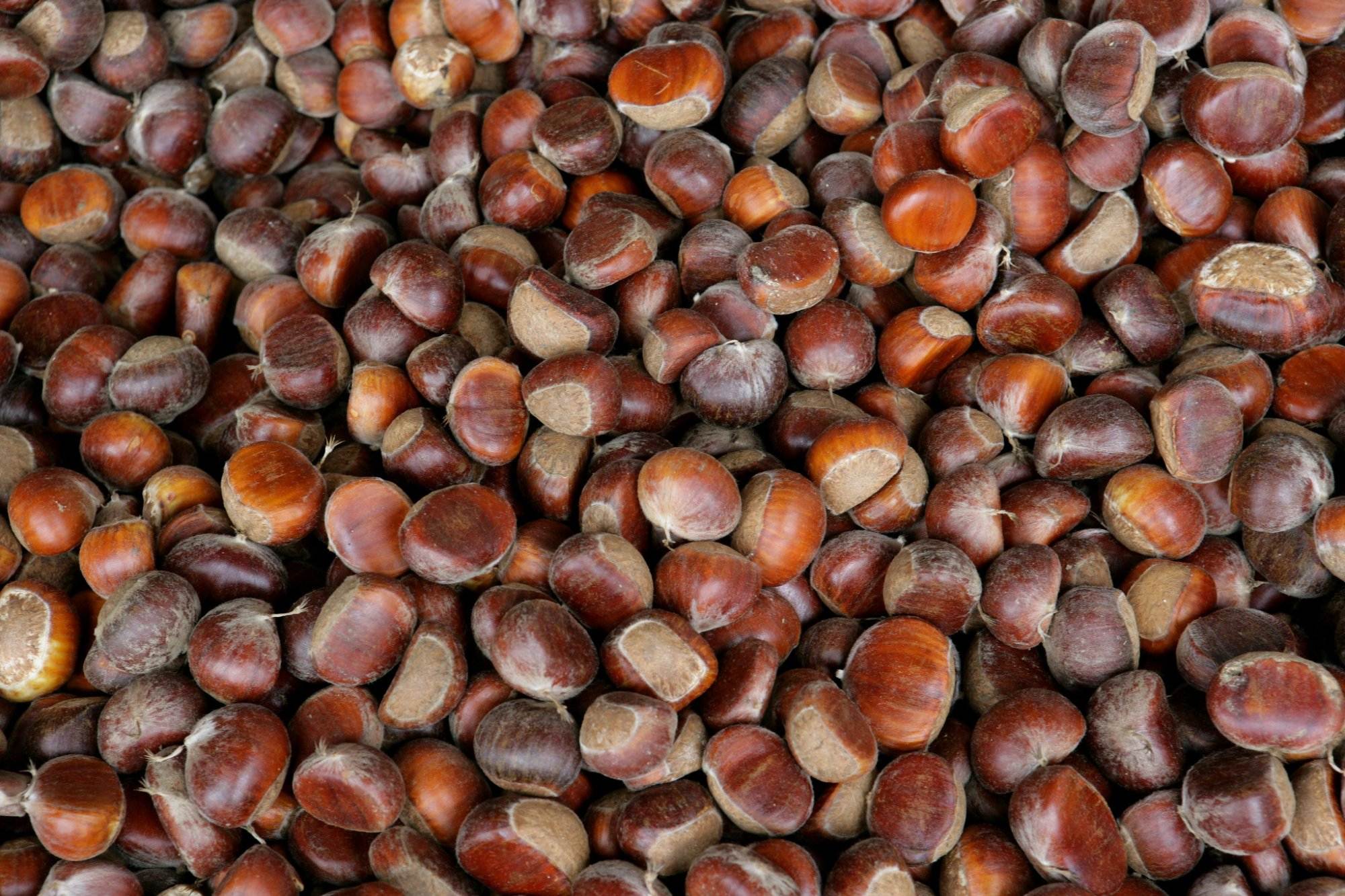
[caption id="attachment_4854" align="alignnone" width="2048"]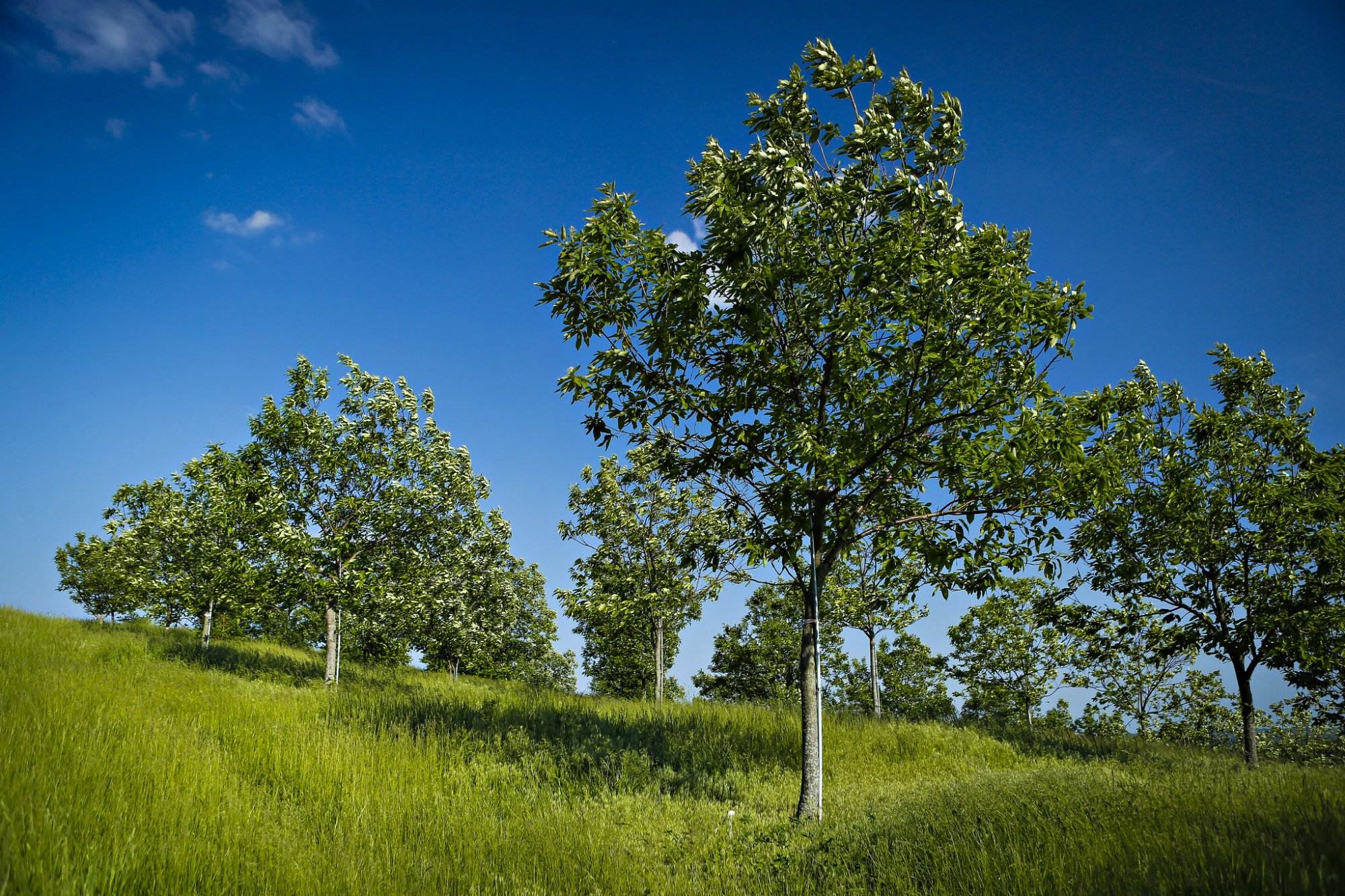
Chestnuts are relatively slow-growing species and take about 10 years to be productive. Once established they can be highly prolific and require little maintenance. The nuts are highly nutritious, being rich in starch, proteins, and fats. Their history as native forest species also grants them rich ecological value for flora, fauna, and mycorrhizal fungi that associate with their roots.
There are many different varieties of chestnuts, some of which are resistant to chestnut blight. Breeding efforts have successfully developed an American Chestnut variety that is resistant and widely promoted by conservation groups.
Sweet Acorn (Quercus sp.)
Acorns are seeds most people in the northern hemisphere are familiar with. This being said, many people are unaware of their edibility and associate them more with food for wildlife. Despite this, Acorns have been consumed by numerous cultures around the world and in some places continue to be consumed. Indigenous groups in California consumed Acorns as their staple food and they have also historically been consumed in some parts of Europe. In the past century there are various accounts of acorns being used as emergency food sources in Europe. They are also commonly consumed still in parts of Asia, such as in Korea where a gelatinous food is made from scratch.
[caption id="attachment_4866" align="alignnone" width="2048"]
While many Acorn varieties are technically edible, many require thorough washing with water inorder to leech the astringent and bitter tannins found within the seeds. A few varieties can be consumed raw, although leeching will increase their palatability. Acorns are typically ground into flour and used for bread, cake, porridge, and other similar recipes.
Since Oaks are slow growing trees, this may not be the most suitable crop for everyone. Those who already have Oaks in their property or region though, could use this underutilized resource. Oak trees can be managed to increase acorn production via selective pruning, as has been done for centuries in regions like southern Spain where it is an important agricultural resource for animal feed. Like chestnuts, Oaks also contribute a great ecological value.
Mesquite (Prosopis sp.)
Mesquite is a leguminous tree adapted to arid climates. It originates from the deserts of the American southwest and Mexico. Despite it being a legume, it is not considered a grain since the entire seed-pod is consumed.
[caption id="attachment_4857" align="alignnone" width="1600"]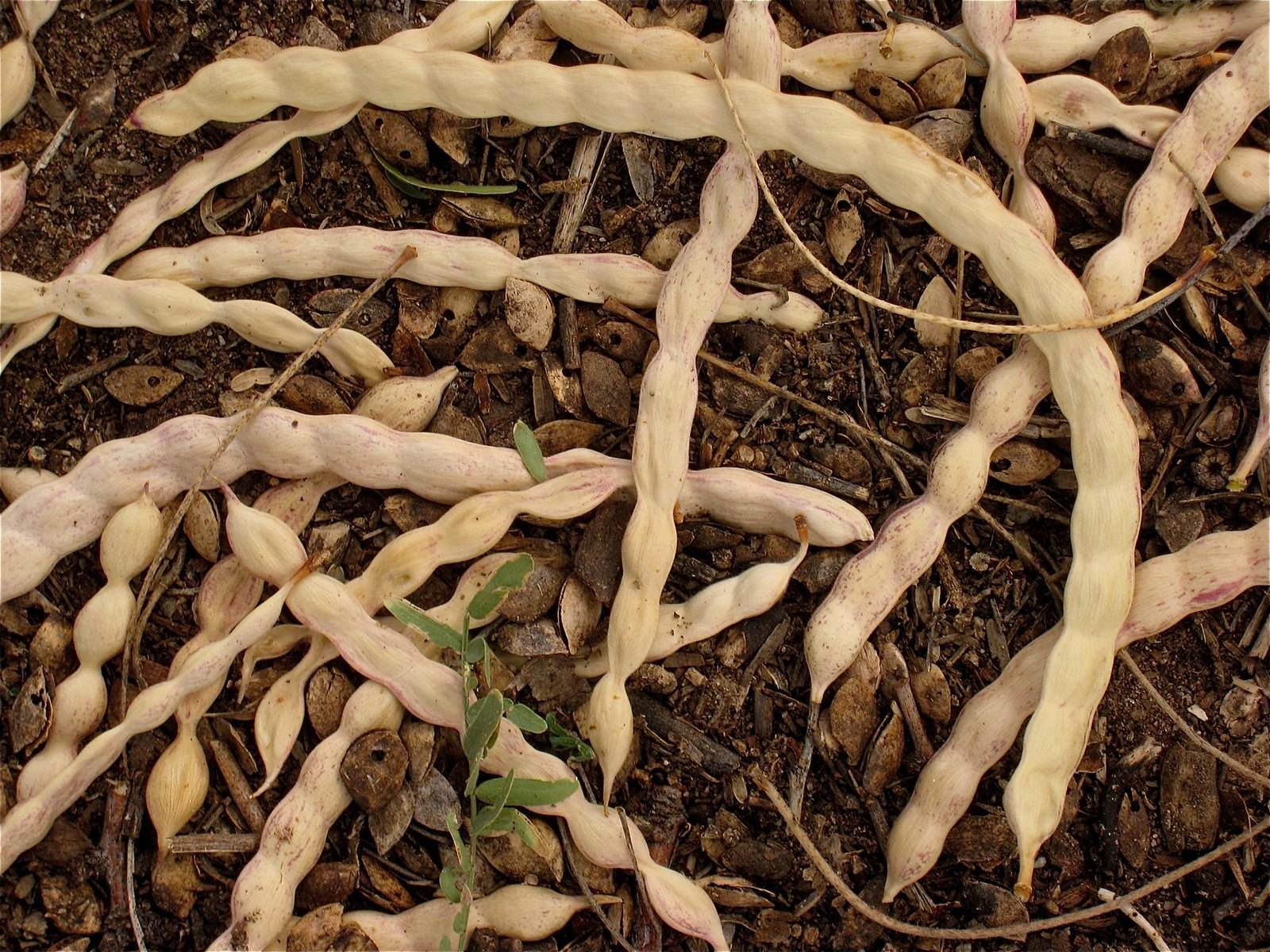
The mesquite plant is a deep rooted and low growing shrubby tree. It is relatively spikey and produces thousands of bean-like pods. Once dried and mature, the pod has a slightly sweet flavor and can be milled into a flour. This flour can then be used for porridge, tortillas, breads, or a variety of baked goods. It is also possible to make mesquite syrup from the pods.
While the flour is tasty, high in protein, and rich in other nutrients it is typically considered an emergency food source. This said, it has recently been popularized as a "super food" due to its rich nutritional benefits. Considering there aren't that many staple crops in arid climates, mesquite is a superb crop in these regions. At the very least it is nitrogen fixing abilities that make it worthwhile!
Carob (Ceratonia siliqua)
Carob isn't exactly what you would call a global food staple, but it is a high yielding crop that has involuntarily become a staple in some cultures during times of famine. This being said, it is enjoyed in many traditional food items of southern Europe and the Mediterranean region. It can also be ground into flour or made into a sweet sugary syrup. Many people may remember Carob as an alternative healthy “chocolate” that was a trendy health item in the 80s and 90s.
[caption id="attachment_4867" align="alignnone" width="2048"]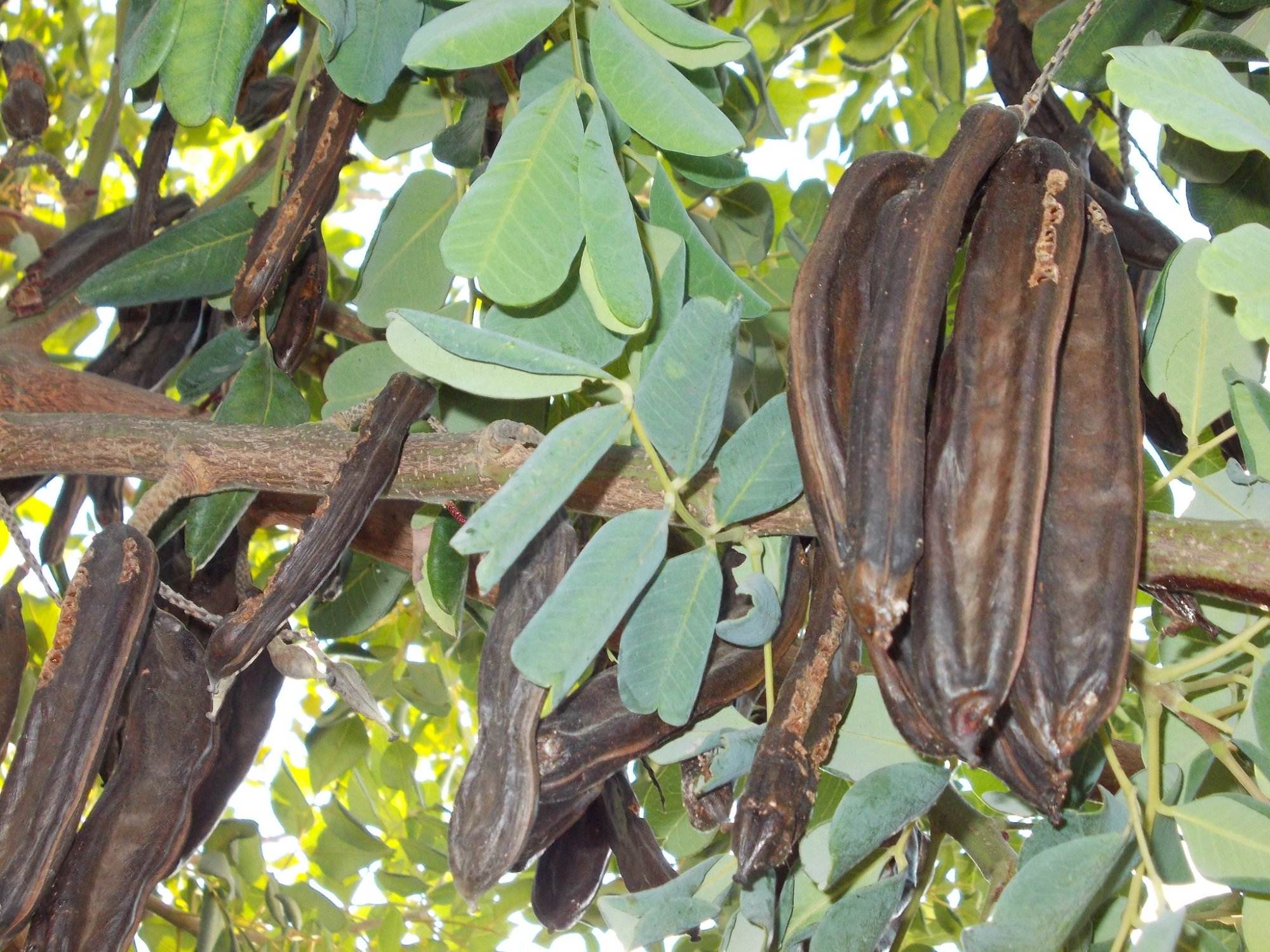
It is highly drought tolerant, nitrogen-fixing, and perfect for arid or desertified soils. While it's not exactly the most valued staple, it can be a good option in regions where not much else grows. At the very least it adds nutrients to your soil or can be used as animal feed.
Breadfruit and Breadnut (Artocarpus sp.)
Breadfruit and Breadnut are two closely related tropical trees which provide an abundance of food. While they are technically distinct species, they are closely related and have many similar attributes. They have humongous jurassic-like leaves and grow easily 30 meters in height. They can become dominant canopy species in the tropics and produce green cannon-ball shaped scaly fruits.
Breadfruit is a starchy and seedless fruit that has a neutral flavor and is soft like a potato when cooked. For cooking the fruit is harvested at maturity but well before being ripe. It is often said that breadfruit has a flavor reminiscent of fresh-baked bread. It can be boiled, fried, baked, or roasted directly in a fire. Once ripe, the fruit becomes sweet and custardy! One mature breadfruit tree can produce an absolute abundance of fruit.
[caption id="attachment_4859" align="alignnone" width="1382"]
Breadnut fruits look alot like breadfruit, but they are full of chestnut sized seeds. These are in fact very similar to chestnuts and in Spanish were given the same name of "Castaña '' because of this. These can be boiled or baked and consumed in a number of different ways. Jackfruit and other relatives in the Artocarpus genus also produce seeds that can be consumed similarly.
[caption id="attachment_4855" align="alignnone" width="1508"]
Leguminous Grains
These are the seeds of plants in the legume family. They can be eaten fresh, but also dried as grains and stored. The most popular of these are annuals and include garbanzo, beans, peas, soybeans, fava, lupines and many more. These are obviously great plants due to their nitrogen-fixing abilities but they also provide tasty seeds that are rich in carbohydrates and protein. While legumes only account for about 5% of the world's food energy intake, in some places they are undoubtedly important staples.
Beans
These are the most obvious and well known leguminous staple in many parts of the world. Many grow as vines and require a growth structure although “pole beans'' can be grown without one. There is truly an endless selection when it comes to bean varieties. While not considered as delicious, there are perennial beans cultivated in the montane tropics of Latin America. Beans should be planted so they mature at the end of the rainy season and can naturally dry on the plant.
[caption id="attachment_4856" align="alignnone" width="2048"]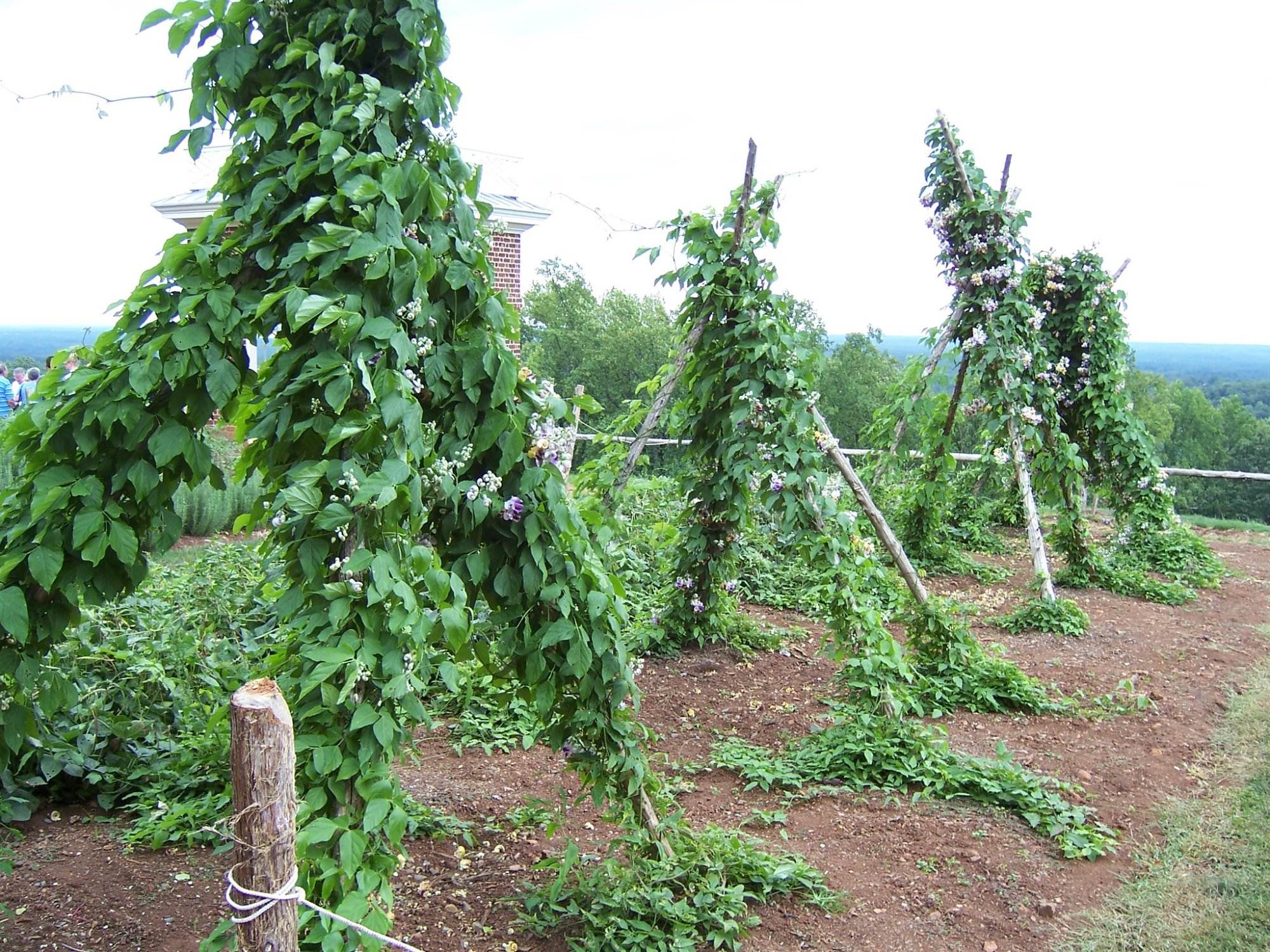
Peas
Peas are delicious legumes that grow well in cooler temperatures. They are an excellent choice for planting in the early spring or fall, and can even grow throughout the winter in places with mild climates.
[caption id="attachment_4844" align="alignnone" width="1920"]
Chickpeas
This delicious legume is most famous for its use in middle eastern and arabic cuisine. It is typically adapted to warmer climates and does not handle frosts.
[caption id="attachment_4840" align="alignnone" width="2560"]
Fava Beans
Fava Beans are an awesome cool-weather legume that can be grown through the coldest times of the year in areas with mild winters. It is relatively hardy, fast-growing, and versatile in the kitchen.
[caption id="attachment_4869" align="alignnone" width="2048"]
Lentils
Lentils are one of the most important leguminous crops on the planet. As one of the crops originally domesticated in the fertile crescent it has a rich history of cultivation. There are dozens of varieties, and can be cultivated in temperate and tropical climates alike.
[caption id="attachment_4849" align="alignnone" width="1280"]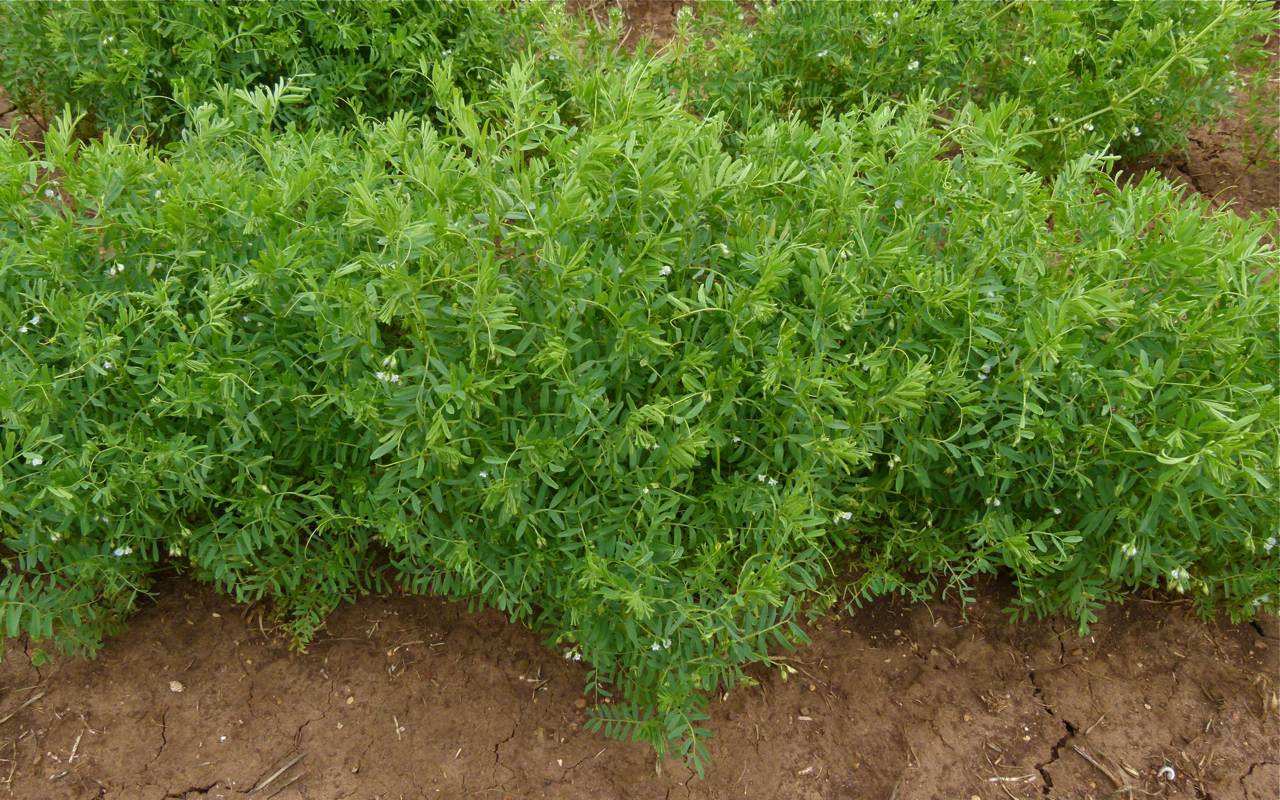
Soybeans
Soybeans are one of the most important staple legumes, particularly in Asia where they are processed into numerous foods. They can be eaten fresh, turned into soy milk, or made into Tofu. Soybeans are also commonly fermented to make products like Soy Sauce, Miso, Koji, and Tempeh. Compared to the other global staples, Soybeans are arguably the most nutritionally superior, with the highest quantity of calories, protein, fat, and numerous other minerals. Soybeans require warm temperatures and do best during summer in temperate climates. They can be grown year round in many tropical regions.
[caption id="attachment_4868" align="alignnone" width="1536"]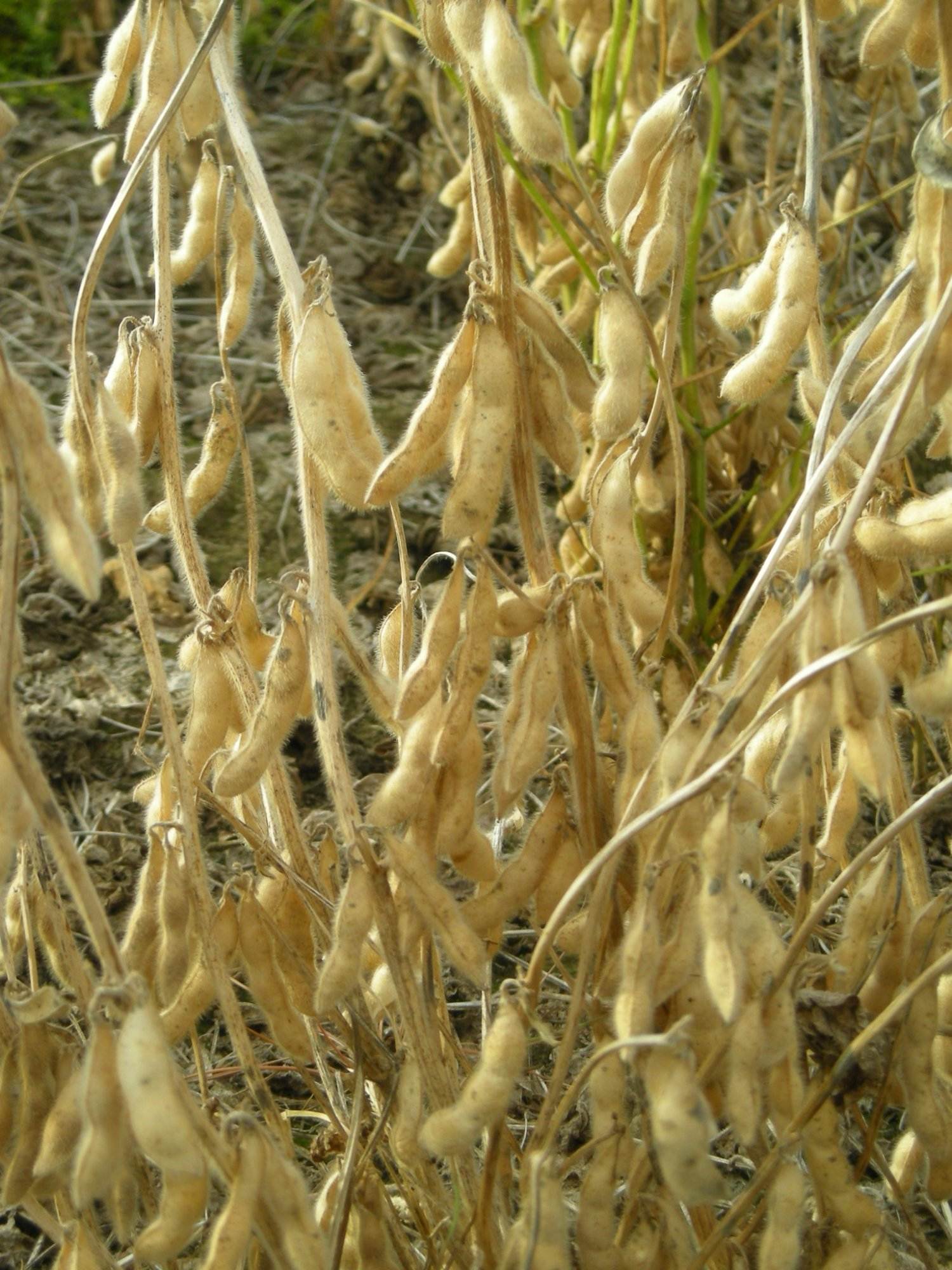
Cereal Grains
Despite the downsides to cereal grains, there are some benefits. They make sense for temperate climates since many only require short growing seasons. There are also many cool season cereal grains that are frost-hardy. There is also a great deal of diversity when it comes to grains, including heirloom varieties and other “ancient grains” like einkorn, millets, and ethiopian wheat.
Corn (Zea mays)
Corn is arguably the most staple crop on the planet. It not only serves as a major staple to people around the world, but it is also an important source of food for animals. While it is often given a bad wrap due to its association with industrial agriculture, corn is actually an amazing and beautiful plant.
[caption id="attachment_4916" align="alignnone" width="677"]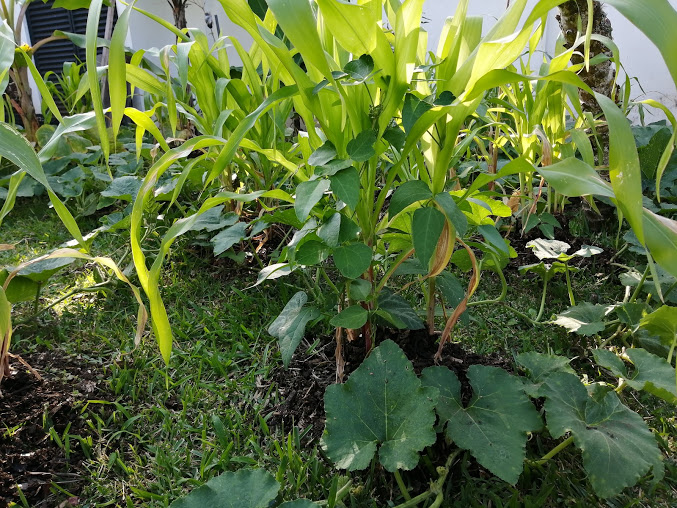
Compared to any other conventional grain, corn is the highest yielding and most accessible to small producers. Even a small field of corn can be highly productive and worthwhile. It can be cultivated alongside beans, squash, and countless other edible/medicinal plant species. In Latin America, corn is still traditionally planted in “milpas” which are polycultures that can easily include more than 15 plants of interest.
[caption id="attachment_4845" align="alignnone" width="2560"]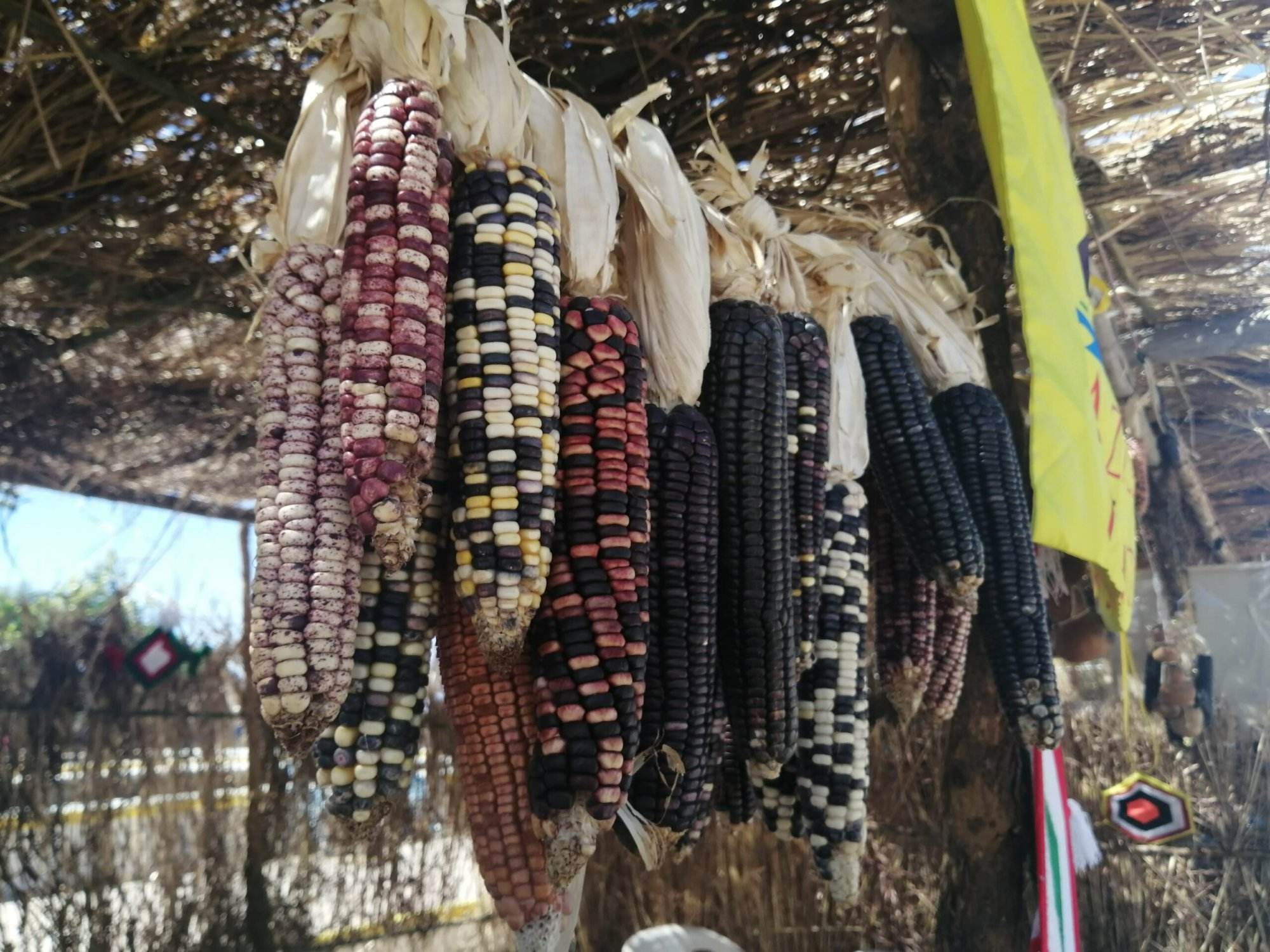
Corn can be eaten fresh, or dried on the cob for future consumption. Dried corn can be milled into a flour for a variety of dishes. In Latin America, corn is boiled with ashes or calcium to increase the nutrient availability of the seeds in a process called “nixtamalizacion”. Afterwards it is milled and used for making tortillas, tamales, or countless other delicacies.
Wheat (Triticum aestivum)
The cultivation of wheat occupies more land on our planet than any other crop. This being said, its total yield is inferior to rice and corn. This makes it the third most important crop in terms of global food supply. Its domestication dates back to the rise of agriculture and development of sedentary civilizations 10000 years ago in the fertile crescent. It is considered a cool-season grain and does best in temperate climates.
[caption id="attachment_4870" align="alignnone" width="533"]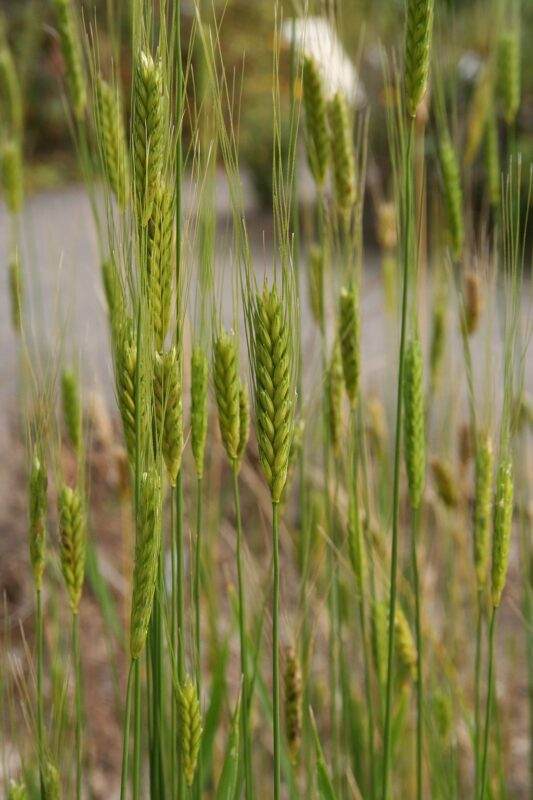
While it is often villainized due to food allergies and health problems, the plant itself is not entirely to blame. There is good reason to believe these issues are more related to modern high-gluten wheat varieties, improper fermentation, and use of agrochemicals. Heirloom varieties such as Einkorn, Spelt, and Emmer, are considered nutritionally superior and much easier to digest.
It is not exactly the most lucrative crop for homesteaders and gardeners since it requires a relatively large quantity of land. For organic and artisanal cultivators it takes roughly 1 square meter of land to produce the wheat necessary for a 500 gram (about one pound) loaf of wholewheat bread. The post processing of the plant is also quite labor intensive, especially without specialized equipment. This being said, if you want to give growing wheat a go then by all means try it!
Rice (Oryza sp.)
Rice is the most important staple crop for more than half of the world's population and provides approximately 1/5th of the world's calorie intake. While its global yield is inferior to corn, it is rarely destined for animal feed and thus considered by some measures the most important for human caloric intake. There are many species of rice including Oryza sativa (Asian rice), Oryza glaberrima (African rice), and species in the genera Zizania and Porteresia.
[caption id="attachment_4858" align="alignnone" width="1081"]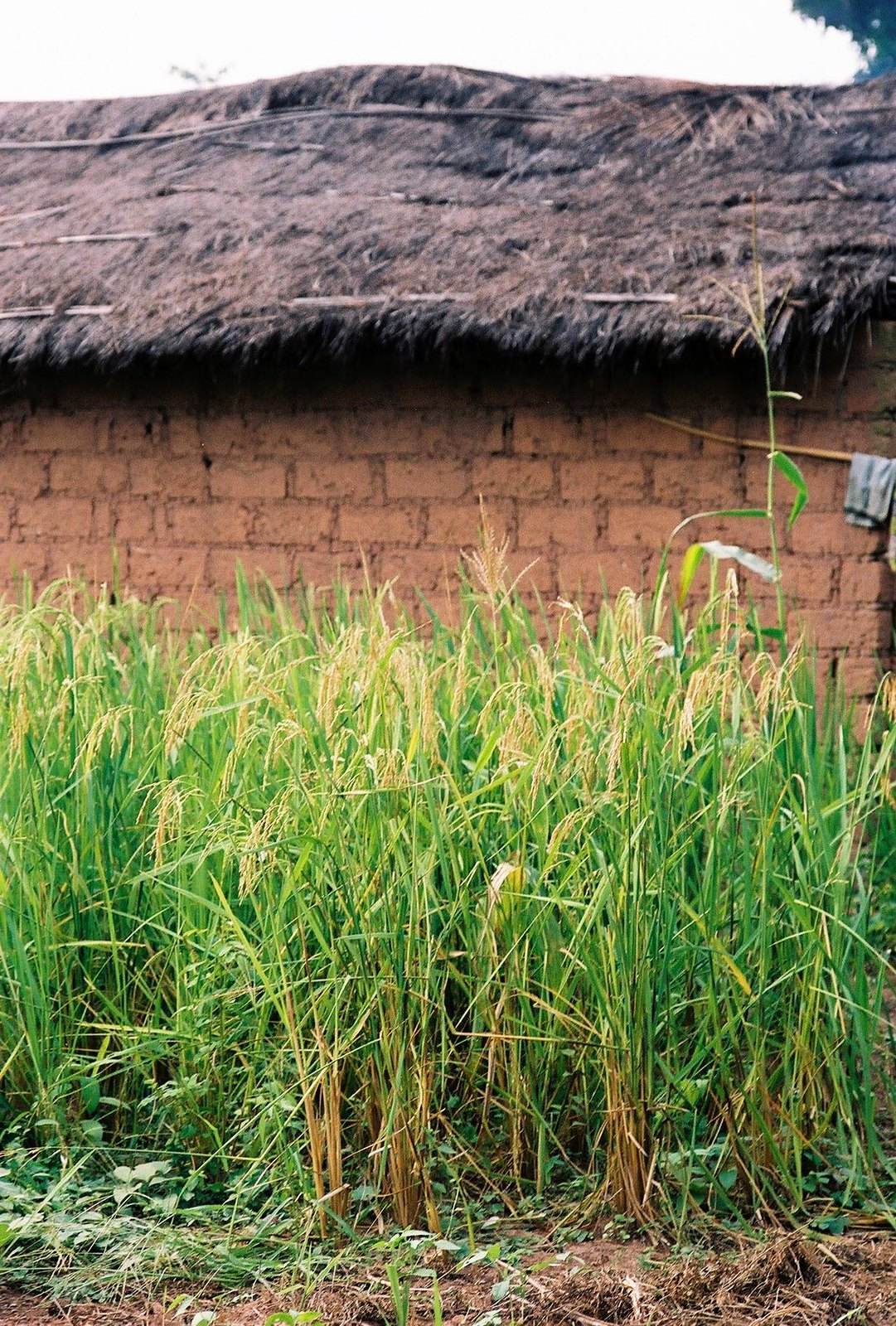
While rice is often grown under flood cultivation, it can also be grown on dryland. The advantage of flood-grown rice is that it is less susceptible to weeds, pests, and tends to offer a greater yield. Dryland cultivation is also conducted in many parts of the world and considered superior in some cases due to lower quantities of arsenic that accumulate in the grain.
While rice isn’t a common crop for permaculture enthusiasts, it is cultivated on small-scales in many traditional cultures. It does have an advantage of tolerating very wet soils where other crops fail. Rice is cultivated similarly to other grains and like wheat requires a fair amount of processing post-harvest.
Sorghum (Sorghum bicolor)
Sorghum is a cereal grain and one of the top ten staple foods on the planet. While it is rarely consumed in the United States and Europe, it is a culinary staple in parts of the dry tropics. Notably, semi-arid parts of Africa and Asia. Despite its relatively low yield per unit area of cultivation, it is valued for its ability to grow in harsh desert-like conditions where other crops fail.
Sorghum can be milled into a flour or simply consumed as a porridge. It can be made into baked goods and in some places it is fermented prior to cooking. Sweet Sorghum has also been traditionally used to make a sweet honey-like syrup. Sorghum can also be popped like pop-corn.
Job’s Tears “Chinese Pearl Barley”
Job’s Tears is a perennial cereal grain that is consumed in parts of China, Japan, and Southeast Asia. While it isn't a particularly highly valued grain, its ease of cultivation and perennial nature makes it attractive for people in tropical climates. The plants tend to enjoy hot and wet conditions, making them great for wetland soils and on the edges of ponds, canals, or streams.
[caption id="attachment_4848" align="alignnone" width="1920"]
[caption id="attachment_4847" align="alignnone" width="800"]
It produces rather large and attractive seeds that are also often used in jewelry or as adornments. The wild-varieties are preferred for this purpose and have tuff seed coats while the edible varieties have thin seed coats. The grains can be boiled and eaten as rice, milled into a flour, or made into a porridge. In many places it is also made into a beverage, which is sweetened or consumed medicinally. It can also be malted and toasted to produce a sweet beverage which can be drunk on its own or fermented into an alcohol.
Pseudocereals
Pseudocereales are grains such as amaranth, buckwheat, and quinoa that do not originate from grasses. These are extremely nutrient rich and make great alternatives to conventional cereal grains.
Amaranth (Amaranthus sp.)
Amaranth is another pseudocereal which was historically a staple in mesoamerica before the arrival of the Spanish. It was such an important crop in pre-colonial Mexico that the Spanish made it illegal as part of their military conquest strategy. Today, it is still consumed in Mexico mixed with honey, milk, and in various deserts. The leaves and tender stems are also extremely nutritious and delicious once cooked.
[caption id="attachment_4838" align="alignnone" width="1200"]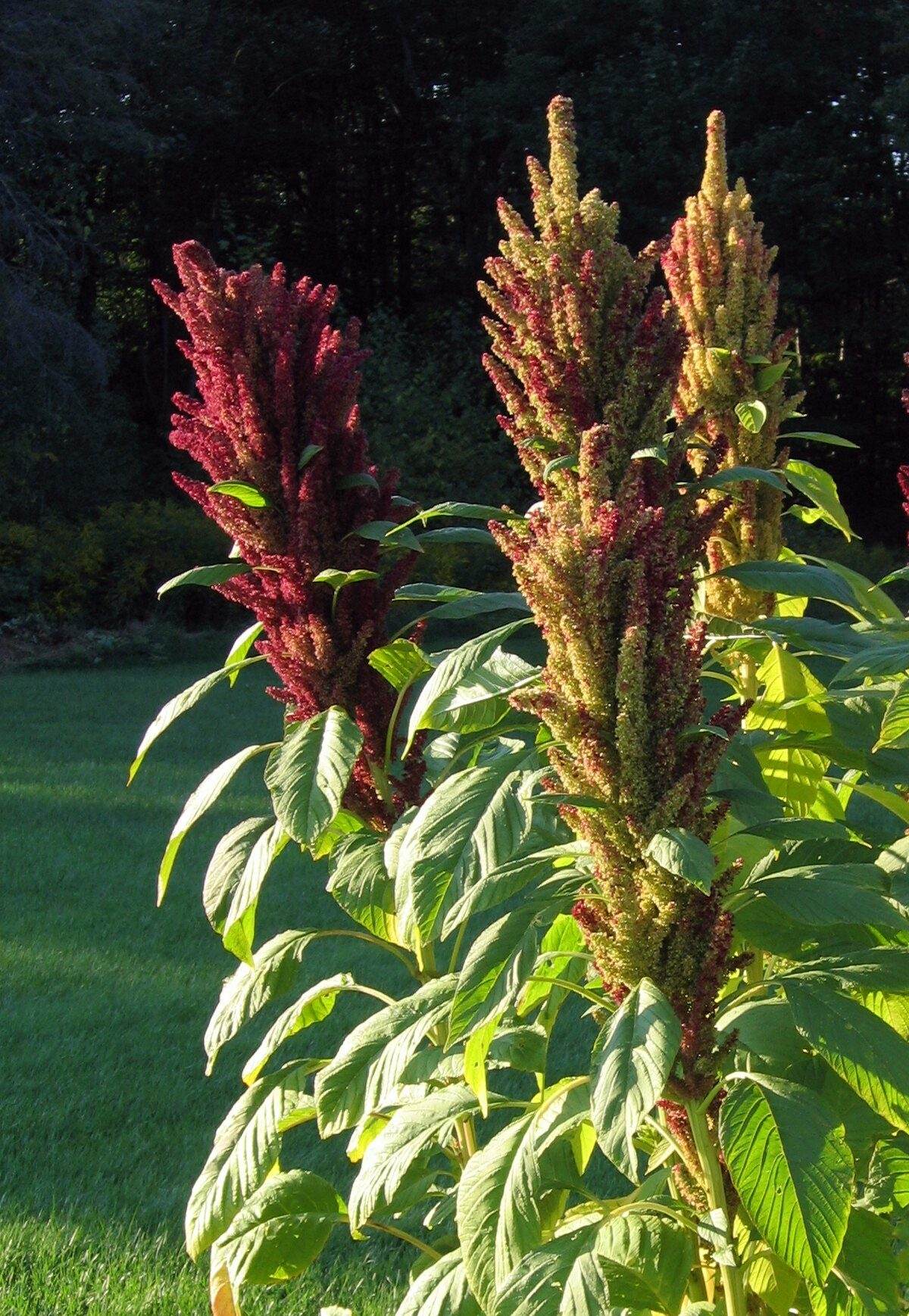
Amaranth grows as a weed almost all over the world. Its yield is similar to rice and corn when cultivated intensively. The seeds are tiny, dark, and hidden within the fluffy mature flowers of the plant. The seeds must be separated from the light seed coat before consuming. They can then be popped similarly to popcorn.
Quinoa (Chenopodium quinoa)
Quinoa is another highly nutritious pseudocereal originating from the Andes. It is a popular health food, and unique for its high protein content. Its yield per unit area is comparable to wheat although it is nutritionally superior.
[caption id="attachment_4851" align="alignnone" width="792"]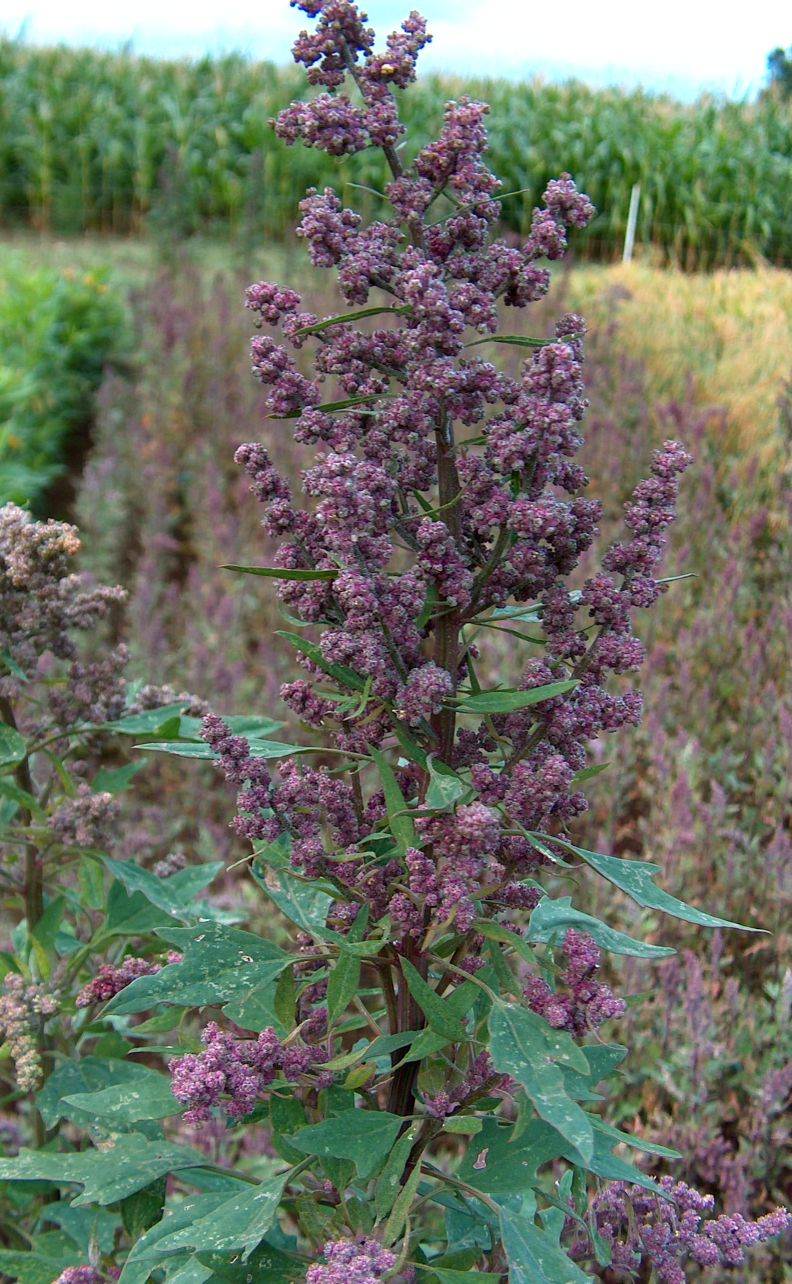
While traditionally a crop from the montane tropics there are many varieties suitable for temperate climates. It is successfully being cultivated commercially in the United States and Europe. It prefers a moist environment with cool temperatures and can handle light frost. It does not do well with temperatures over 30°C (86 °F).
Note: It is important to properly wash Quinoa before consumption due to its high saponin content. While this is a bit tedious, this run-off water can also be used as a natural soap and cleaning product.
Buckwheat
Buckwheat is a type of grain and pseudocereal. Despite the name, it is not related to wheat. It is widely consumed in Europe and Asia, often whole in porridge but also processed into noodles, pancakes, and baked goods. While it was traditionally considered a "peasant food" it has recently received growing attention as people seek to move away from conventional cereal grains.
[caption id="attachment_4839" align="alignnone" width="1312"]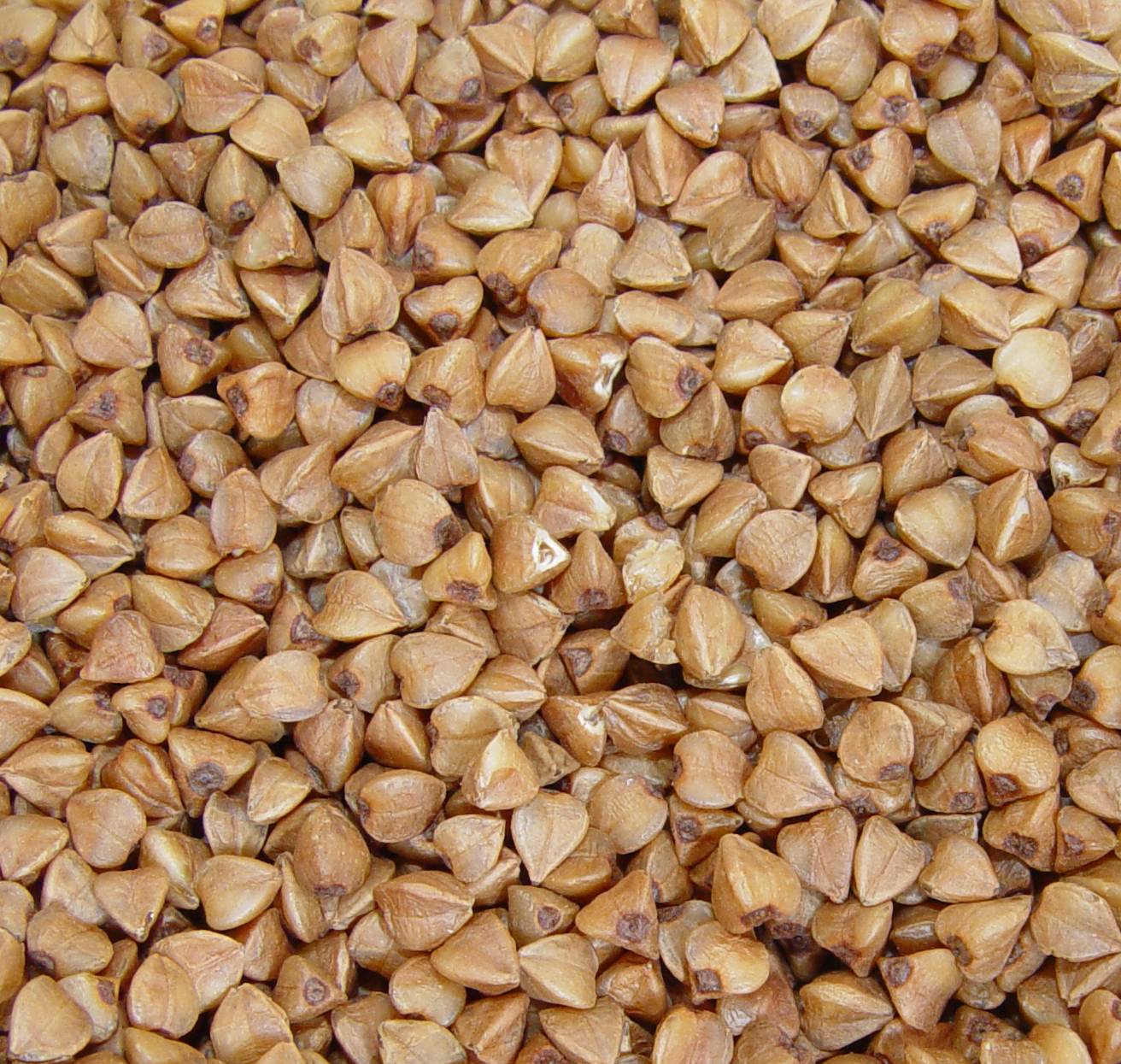
Buckwheat grows quickly and is commonly used as a cover crop and for green manure. Its quick growth allows it to be cultivated in mountainous regions with short growing seasons. It is considered the world's highest cultivated plant, grown at almost 5000 meters in the Tibetan plateau! It is most suitable for cultivation in temperate climates and tropical montane climates.
Cucurbits
These are members of the cucumber family that make starchy fruits. These aren’t usually mentioned in literature or statistics regarding staple foods. Even still, their ability to provide ample and abundant harvests plus their presence as staples in traditional cultures world-over makes it well worth the mention.
Squashes (Cucurbita sp.)
Pumpkins, Zucchinis, Acorn Squashes, and dozens of other squash plants are excellent high yielding plants. There are varieties out there for almost any climate and they are ingredients most of us are already familiar with. While it isn't considered a staple crop, in many parts of the world it is definitely part of the staple diet. Evidence suggests its cultivation originated in southern Mexico about 8000 years ago.
[caption id="attachment_4853" align="alignnone" width="2080"]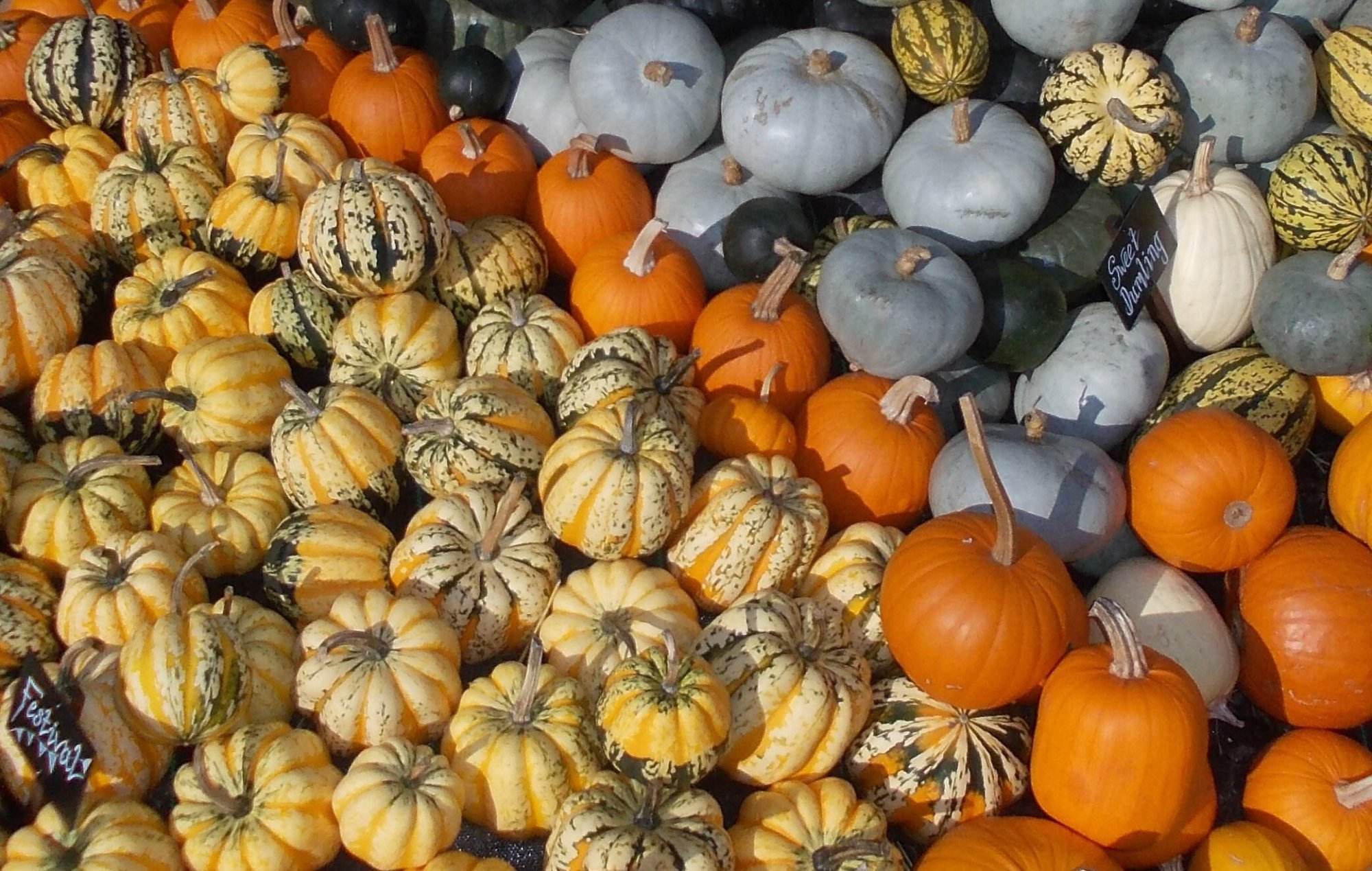
Under the right circumstances squash plants can be extremely high-yielding. One or two healthy plants can be enough to feed a family plus provide extra to give to friends. Certain squashes can also be stored for months before consumption. Squash also produces delicious oily seeds that add an extra bonus to the harvest!
Chayote
Chayote is a close relative of squashes that originates from Latin America, although it is now cultivated in many parts of the world. This perennial vine produces an incredible quantity of hand-sized fruits which can be cooked or eaten raw. Once cooked the texture lies somewhere between the zucchini and potato spectrum, with different varieties leaning one way or the other.
[caption id="attachment_4841" align="alignnone" width="1920"]
There are many different varieties of Chayote. They can be dark green, white, and any color in between. Some are covered in thousands of small spikes while others are completely smooth. Their exact size and shape is varied. While the plant is most prized for its fruit, almost all of the plant is edible. The young tender vines can be cooked as well as the root! The tuberous root is large and comparable to a potato once cooked.
Conclusion
Today, the world’s most important staple-crops are the highly subsidized and industrialized food items. This makes them cheap and accessible to all, but it does come at a price.
Environmentally, these crops are often intensively produced and utilize copious amounts of synthetic fertilizers and pesticides. This is not only harmful to ecosystems, the climate, and water-quality but also to the consumers health.
Socially, this further leads to the disappearance of small-scale and traditional agriculture which is replaced with cheap and imported food items. Ultimately, this causes a global dependence on the industrial supply-chain which is everyday further threatened by climate change, peak-oil, and social unrest.
By incorporating staple-crops into your design, you not only produce food of superior quality and nutritional value but you build resilience into your system. You bypass the harms caused by the industrial food-system while benefiting your own health and food-security. Afterall, this is nothing new. Every traditional culture was once deeply tied to the cultivation of their staple crops. That’s why “revolving” back to this way of living, is indeed a revolutionary act!
